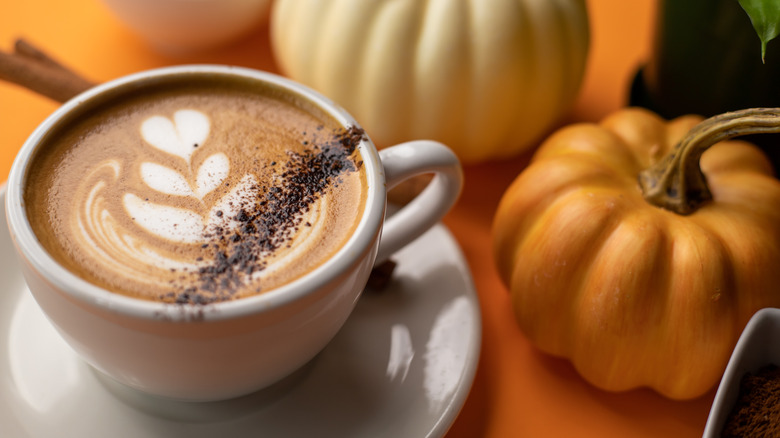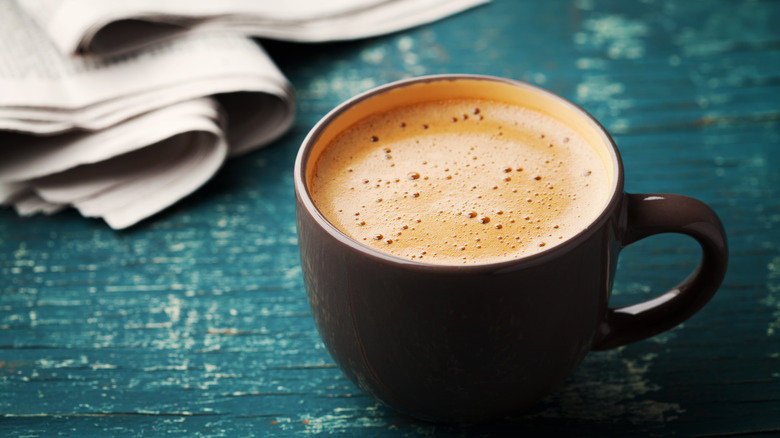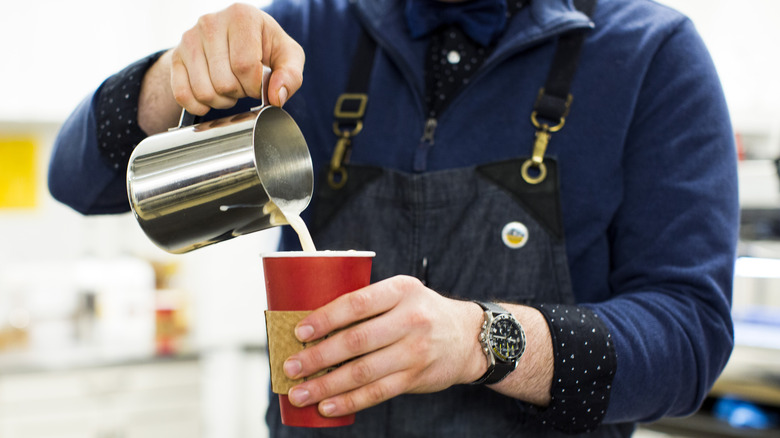The Mysterious History Of The Classic Latte
The latte arrived on the coffee scene relatively late in the game. According to Encyclopedia Britannica, the coffee plant is likely native to Ethiopia. A goatherder supposedly discovered its berries' energizing properties after noticing his goats getting all riled up after eating them, circa A.D. 850. However, it wasn't until long afterward, in the late Middle Ages, that the crop was brought to Southern Arabia and first cultivated for liquid consumption.
From there, things really took off. PBS notes how the coffee drink caught on quickly amongst Muslim communities because of their often lengthy prayer sessions. Coffee then spread to Europe after the Renaissance, serving a variety of roles in society. By the start of the modern era, coffee reached the New World and officially became a global commodity. Nowadays, coffee is both mass-produced and specially made. However, it wasn't until the more recent periods — in either the 19th or 20th century — that the classic latte took shape.
19th century
A latte can take some skill to make right, but the recipe is fairly straightforward. Traditionally, it's ⅓ espresso and ⅔ steamed milk — the Italian "latte" translates to "milk" in English — with milk foam on top, per Master Class. There are variations, of course, like how larger sizes often have a little more than ⅔ milk, as well as the iced and flavored latte versions. However, the consistent ingredients are espresso and milk.
At least a couple different origin points have been speculated for this beverage. Perhaps the earliest record of the drink comes from 1867 in the essay "Italian Journeys" by William Dean Howells. In it, Howells documents his trip on a steamship that took them from the Italian port city of Trieste to Venice. During this voyage, he was served a "caffè latte" with breakfast one morning (via Project Gutenberg). This first mention of the hot refreshment probably refers to something very different from today's lattes. Instead, it's safe to assume that — without the convenience of an espresso machine — there wasn't as much milk foam, making it more closely resemble the café au lait of modern Italian breakfasts.
So, if that was only a precursor to the latte, then when did the classic recipe truly take form?
20th and 21st century
The modern form of lattes emerged in the 20th century and has since thrived in the 21st. According to MasterClass, an Italian-trained barista, Lino Meiorin, is often said to be the true inventor of the caffè latte. He's well known for serving this drink in Berkeley, California, and may be the reason it became so popular in the 1950s. The Daily Coffee News recounts how Meiorin, as the owner of Caffe Mediterraneum, made this adjustment to a cappuccino when customers started complaining their drinks were too small and too strong.
In order to size up and cut the acidity of his traditional beverage, Meiorin added more steamed milk to the espresso, serving the large and diluted drink in bowls and pints. The concept spread rapidly. Today's baristas capitalize on the tradition of serving lattes in wide-mouthed containers by showcasing latte art (via Daily Coffee News).
Plus many unique spins have been put on this coffee drink by adding and mixing syrup flavors, leading to timely trends like the pumpkin spice latte. That craze is emblematic of the latte's identity in the 2000s. The pumpkin spice industry generates hundreds of millions of dollars each year, thanks in large part to the 21st-century invention of social media (via Business Insider). It's doubtful Howells or even Meiorin could've imagined such a future for this simple coffee drink when they pioneered it, but here we are!


